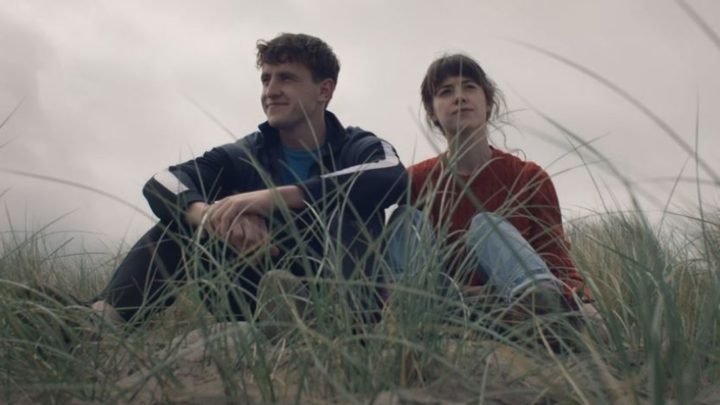Drowning in a lack of narrative
In its efforts to reject traditional story, The Drowned Man: A Hollywood Fable tells us less than it could about human experience.

Want to read spiked ad-free? Become a spiked supporter.
Cult theatre company Punchdrunk is currently the hottest thing since sliced toast. Before it had even opened its new piece of ‘immersive theatre’ in Paddington, The Drowned Man: A Hollywood Fable, it had to extend the show’s booking period to the end of this year. And, just as the world’s press are camped outside St Mary’s Hospital round the corner in expectation of a royal baby, so a grungier and more beardy crowd are gathering in gleeful expectation outside this warehouse venue – a disused sorting office which has been converted into the HQ of fictional Fifties Hollywood filmmakers ‘Temple Studios’.
The show features a massive, extraordinarily atmospheric and labyrinthine design and is Punchdrunk’s biggest-ever production since their breakout performance of Edgar Allen Poe’s Masque of the Red Death at Battersea Arts Centre in 2007. There, Punchdrunk established a reputation for promenade performances in which audiences are ‘immersed’ in a hermetically designed world where they are free to drift around, examining the set and encountering actors in different rooms. It’s the same here, only on an industrial scale in a co-production with the National Theatre. And this show is inspired by George Buchner’s nineteenth-century proto-expressionist classic in which a jealous young soldier goes off the rails, killing his lover and then taking his own life. Directed by the company founder, Felix Barrett, with Maxine Doyle, it becomes a parable of enslavement to the American Dream in Fifties America.
After pulling on a mandatory white mask, you walk through darkness to a service lift operated by a Beverley Hills diva who delivers you to a seemingly endless maze of cavernous locations. A trailer park with woodchip floors and abandoned caravans. The gates to the studios complex itself, flanked by statues of leaping horses. The interiors of shops and cinemas. A milk bar. A sports locker room. A boardroom. A stage with a sleeping dog. A parking lot. One hidden detour leads you, Narnia-like, through a cupboard of clothes in a tailor’s shop to an abandoned motel room. And downstairs, there’s a dilapidated mansion like that of Norma Desmond in Sunset Boulevard.
In all of these locations, a cast of actors roam, fidget, writhe, rave and eventually supply each other with blowjobs. All the while, Stephen Dobbie’s portentous music mobilises the swelling strains of orchestral film scores, suggesting that something momentous is about to happen. The effect is very much like David Lynch’s Blue Velvet on stage.
Throughout this, the audience roam free, following actors or simply exploring the sets and chancing on snatches of performance. Punchdrunk’s big idea is that this has a liberating effect for audiences; the company’s website rejects the ‘passive obedience’ of traditional audiences in darkened theatres. The show is nonetheless very highly mediated, not just in terms of the layout and atmosphere of the performance, but also in the discreet ministrations of black-masked ushers. Apart from giving you a sweaty nose, one of the curious effects of the masks the audience are asked to wear is to disguise participants and free them from their normal behaviour. This makes people noticeably ruder, pushing and jostling. But they are also more herd-like – more eager to be led than to explore. Crowds suddenly swoop past, in and out of darkness.
The more serious challenge to the play’s radical credentials comes from the fact that character development is replaced by impressions and cameos. With this, there is a necessary degree of stereoptyping to allow audiences to recognise quickly what they see. So, the almost empty Edward Hopper-like bar where a lonely woman sings torch songs is tended by a barman chewing a cocktail stick and only the lone drinker in a cowboy hat looks more pissed off. However meticulous the attention to detail, however much fun there is in the exploration of rooms, the effect is simply to reinsert us into standard images and hit us with familiar tropes. This could, of course, be the point in the declared intention to suggest the precipice between illusion and reality, but even that is a kind of cliché. Much more challenging might have been to present us with the reality of the illusion as experienced by the characters.
Significantly, however, the actors are largely mute and don’t get a credit in a programme. Instead, they remain trapped inside a hell of endless, anonymous repetition in which they are really just part of the furniture. One of the functions of narrative in drama, however, is to suggest another dimension of our experience in time, and open up a vista for the imagination through identification with the performers. As such, story offers the experience of consequence and change, brought about by cause and effect. This narrative dimension is, moreover, a feature of all the works referenced and reverenced by this production, from James Dean to David Lynch. Without this narrative dimension, the actors seem like zombies in a museum. Although this may strike a chord with many people today – not least those employed in the heritage industry – it is a necessary limitation on its description of human experience and makes it that bit less haunting, that bit less troubling.
Patrick Marmion is a freelance journalist, playwright, founder of Soapbox debating forum and a part-time tutor at the University of Kent. Visit his website here: www.patrickmarmion.co.uk.
The Drowned Man: A Hollywood Fable is playing until 31 December 2013 at Temple Studios, 31 London Street, W2 1DJ. To book visit the National Theatre website or call 020 7452 3000.
Celebrate 25 years of spiked!
A media ecosystem dominated by a handful of billionaire owners, bad actors spreading disinformation online and the rich and powerful trying to stop us publishing stories. But we have you on our side. help to fund our journalism and those who choose All-access digital enjoy exclusive extras:
- Unlimited articles in our app and ad-free reading on all devices
- Exclusive newsletter and far fewer asks for support
- Full access to the Guardian Feast app
If you can, please support us on a monthly basis and make a big impact in support of open, independent journalism. Thank you.







Comments
Want to join the conversation?
Only spiked supporters and patrons, who donate regularly to us, can comment on our articles.